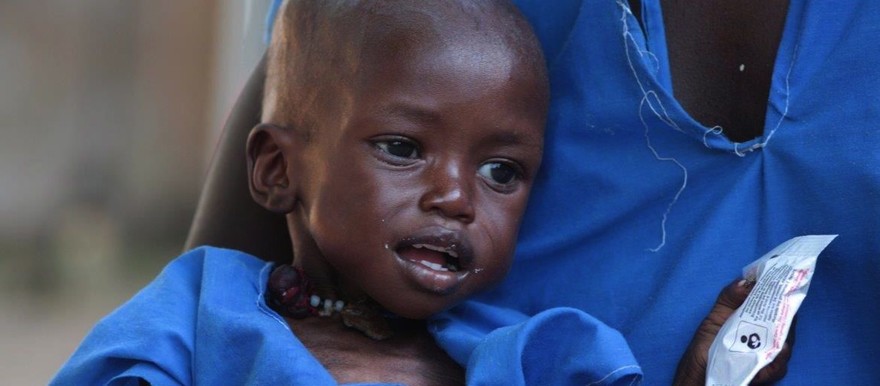Aid agencies in South Sudan consider that a famine is possible or even likely to occur within the coming months, depending on the level of violence and level of funding for humanitarian operations.
Though the famine would be ‘localized,’ not nationwide, it would nonetheless affect huge numbers of people, the aid groups warn. Three northern states would be hardest hit, and the famine would only be lifted after the end of the rainy season, when road conditions improve.
“There is worse coming,” warns the president of International Rescue Committee (IRC) David Miliband in an article published in the Guardian newspaper yesterday.
Currently the technical benchmarks for famine have not yet been reached, though hundreds of children are already dying. To be declared a famine the rate of deaths per 10,000 people must rise to two daily, and at least 30 percent of the population must be acutely malnourished, according to the UN’s definition.
Miliband says, “The scale of what we now face [as humanitarians] is testing resources in an unprecedented manner.” His organization the IRC operates emergency health and nutrition programmes in South Sudan.
IRC published yesterday a timeline for a famine scenario in South Sudan. The organization did not predict that a famine definitely will take place, but it stated that this timeline is one possibility for how events could unfold over the coming months.
July 9, 2014: Independence Day
On the third anniversary of South Sudan’s independence humanitarian aid groups (also known as nongovernmental organizations, or NGOs) raise the alarm that a funding shortfall is imminent and unless new appeals are met the country faces famine and disaster
Sept. 1, 2014 — Sept. 14, 2014: Famine declared
The worst-case forecast in South Sudan begins to be realized. Conflict has intensified, limiting humanitarian activity in conflict-affected areas, and the harvest season has not produced the output anticipated.
Famine is declared in areas of Unity, Jonglei and Upper Nile States.
Nov. 1, 2014 — Nov. 31, 2014: Lack of access to health facilities
With the rainy season well and truly over, cholera and other waterborne illnesses continue to spread in communities with little to no access to health facilities or adequate healthcare. Sporadic violence continues to displace families, leaving millions in danger of starvation who are now even harder to reach.
The international community tries to bring parties back to the negotiating table, but the political situation has complicated as armed groups have fractured and multiplied.
Jan. 1, 2015 — Jan. 31, 2015: Access to food remains a challenge
Scaled-up food assistance reaches those in need as money comes through to aid agencies and the UN, but access to some locations remains a challenge and elevated rates of acute malnutrition persist among the hardest hit regions. Many lives are lost.
Feb. 1, 2015: Potential second return of famine
The fighting, displacement and famine over the past 14 months have left the country fragile and more susceptible to spikes of further food insecurity.
South Sudan’s future remains riddled with political and violent confrontations and as a result another sustained period of fighting could conceivably drive a second return to famine.
Photo: A severely malnourished child in Ganyliel, Unity State, 2014 (Medair/Wendy van Amerongen)
Related:
David Miliband says South Sudan at ‘tipping point’ (28 Apr.)
Agency issues famine warning for ‘localized areas’ in South Sudan (10 May)




